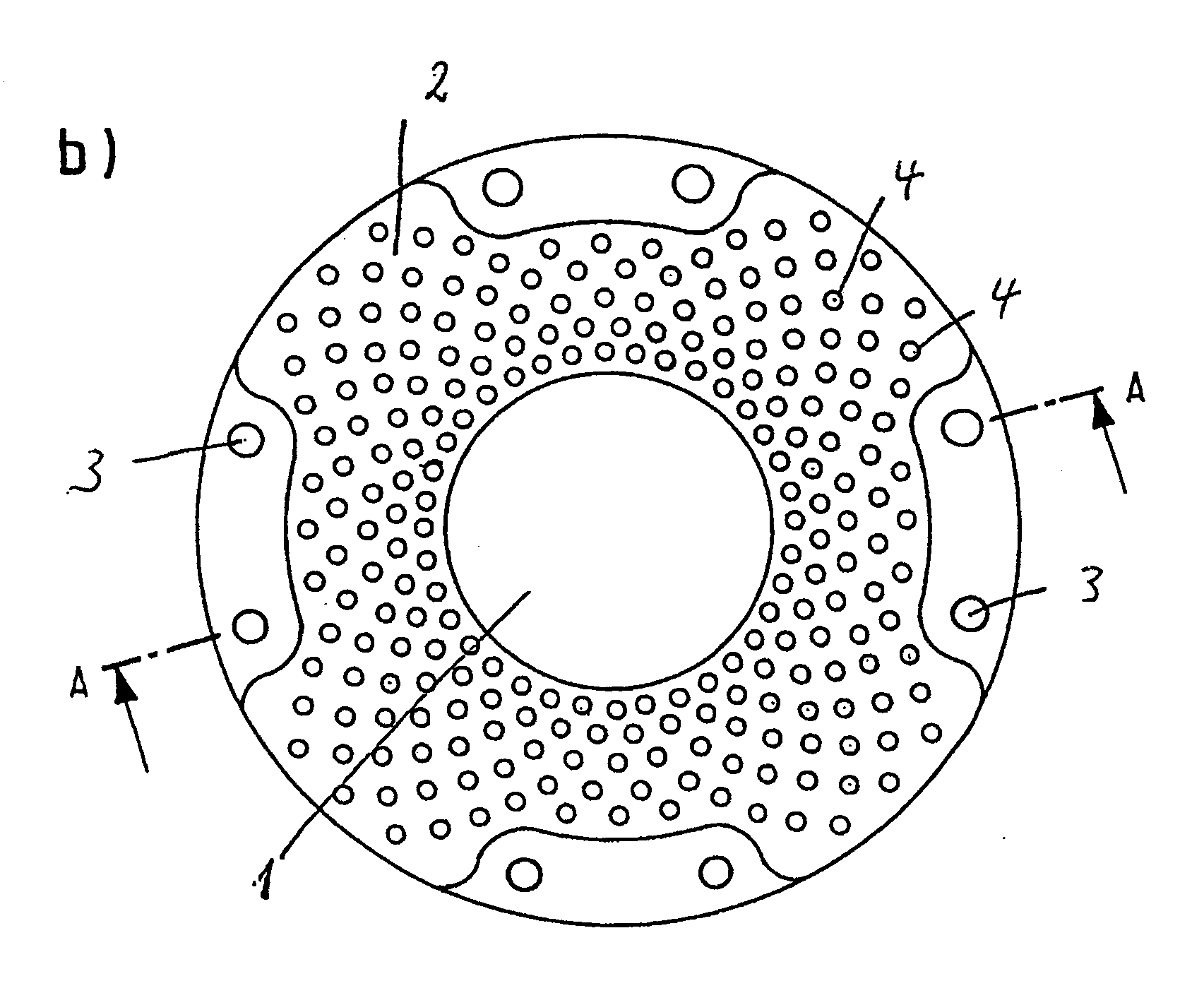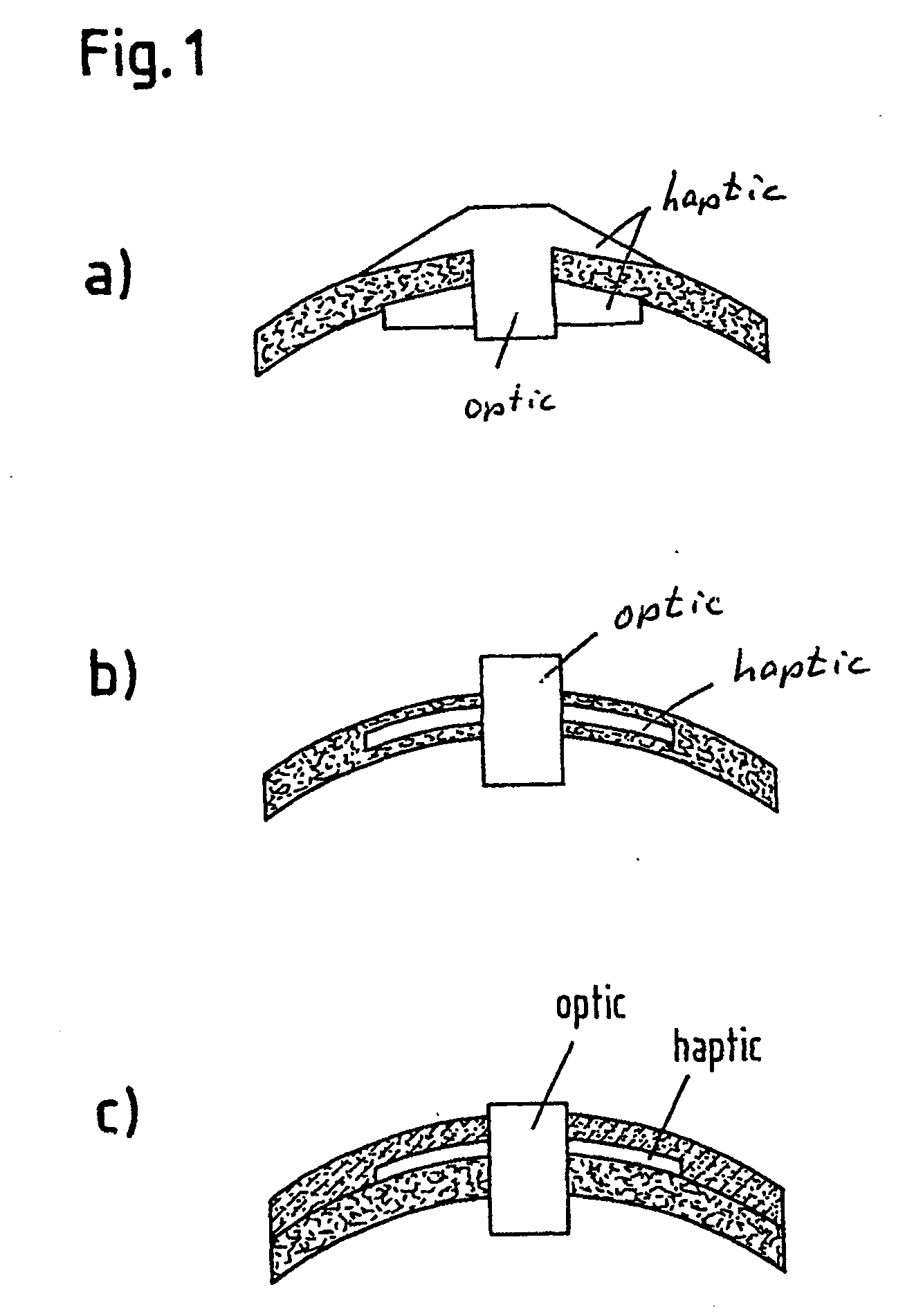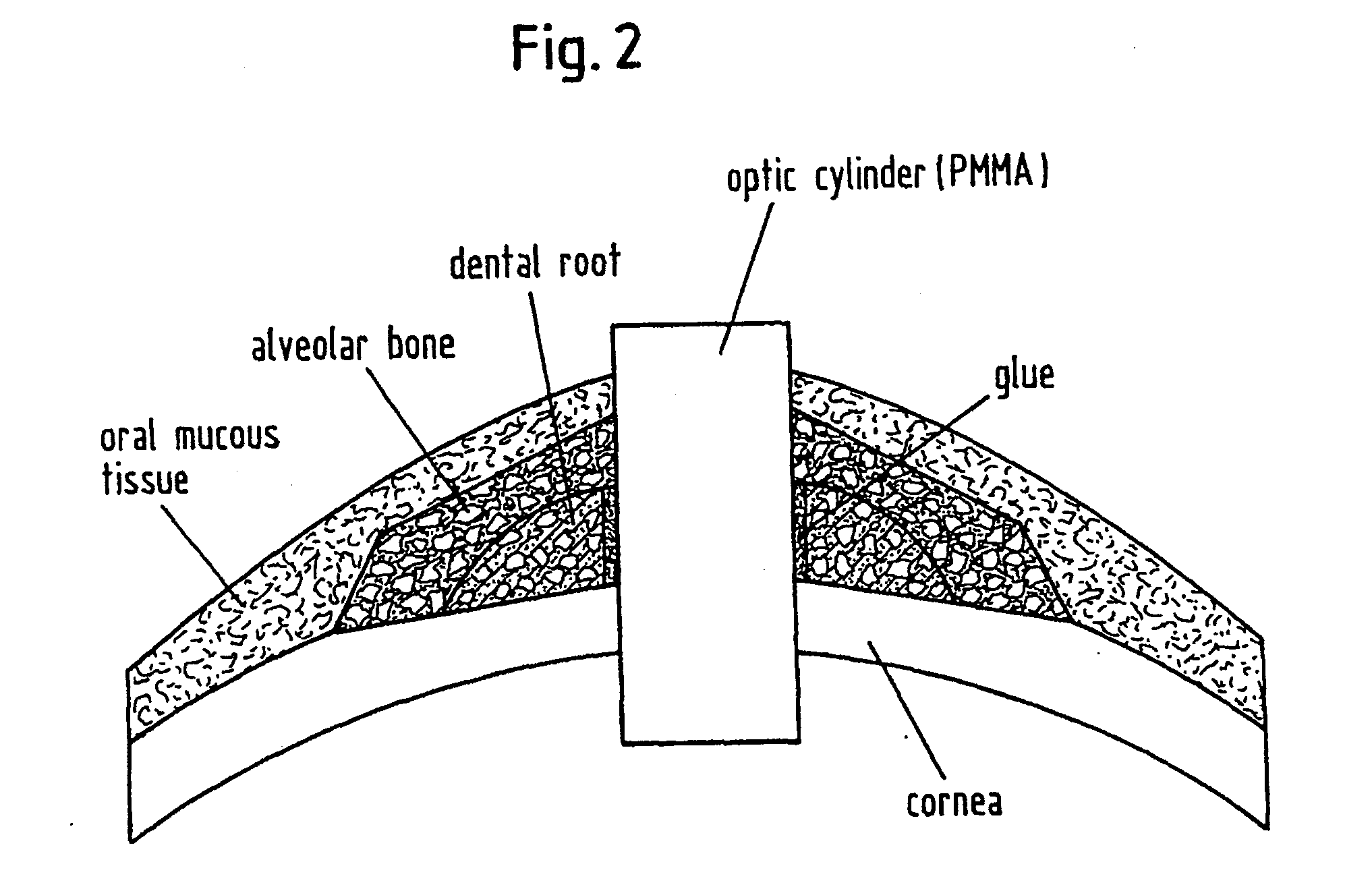Keratoprosthesis
- Summary
- Abstract
- Description
- Claims
- Application Information
AI Technical Summary
Benefits of technology
Problems solved by technology
Method used
Image
Examples
Embodiment Construction
[0019]Coating of PMMA with Heparin
[0020]The surface of clinical quality Polymethylmethacrylate (PMMA) platelets was saponified by incubation in 3 M Sodium hydroxide at 70° C. for 24 hours. Thereby a negatively charged surface was created. After washing the activated PMMA platelets with Sodium carbonate buffer solution at pH 9 the surface was coated with Polyethyleneimine (PEI) by ionic bonding. The successful coating with PEI was verified by staining with Eosin red solution. Sodium heparine was activated by Sodium nitrite solution. The PEI coated PMMA platelets were incubated with activated Heparin solution. Subsequently the binding of the activated Heparin to the PEI coated PMMA surface was initiated by incubation with Sodium borohydride solution. The successful Heparin binding was verified by staining with Toluidine blue solution.
[0021]In vitro cell adherence tests showed that the heparinized PMMA surfaces strongly inhibited the adherence of human fibroblasts as compared to untrea...
PUM
 Login to View More
Login to View More Abstract
Description
Claims
Application Information
 Login to View More
Login to View More - R&D
- Intellectual Property
- Life Sciences
- Materials
- Tech Scout
- Unparalleled Data Quality
- Higher Quality Content
- 60% Fewer Hallucinations
Browse by: Latest US Patents, China's latest patents, Technical Efficacy Thesaurus, Application Domain, Technology Topic, Popular Technical Reports.
© 2025 PatSnap. All rights reserved.Legal|Privacy policy|Modern Slavery Act Transparency Statement|Sitemap|About US| Contact US: help@patsnap.com



